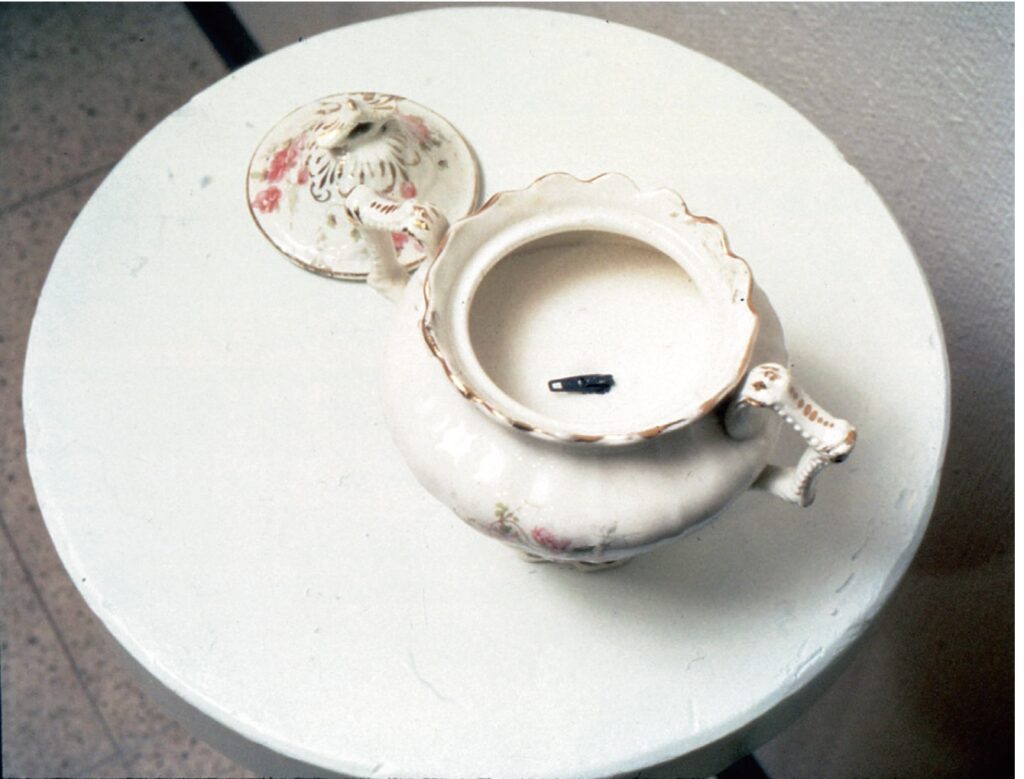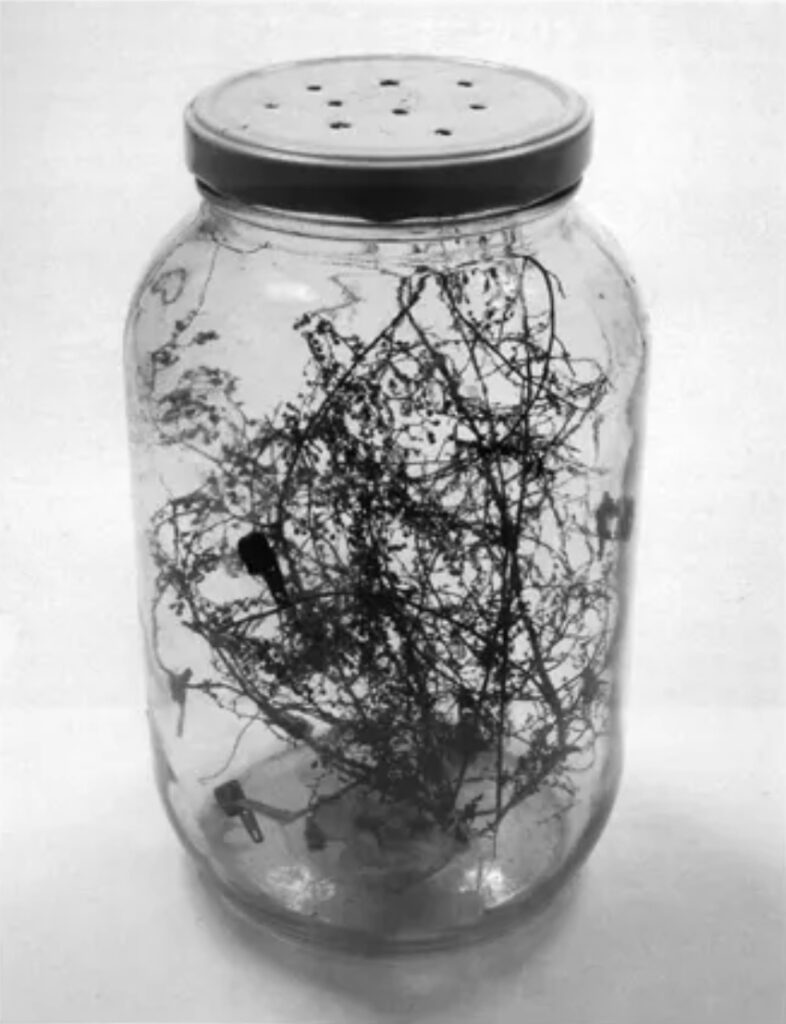
A 2-liter bottle with sticks and metal zipper sliders in it from David Hammons, a 1996 sculpture titled, Flies in a Bottle, is being sold this month in New York.
In 1993 David Hammons made a sculpture, Fly In The Sugar Bowl, by placing a metal zipper slider in a bowl of sugar. The first and only place I’ve seen it was in Elena Filipovic’s 2019 contribution to Afterall’s One Work series about Hammons’ Bliz-aard Ball Sale.

“How could you not think of James Baldwin’s ‘Fly in the Buttermilk’” Filipovic asked, referring to Baldwin’s essay about visiting the family of the first Black student to attend a white high school in Charlotte, North Carolina in 1957. [Originally given the title, “The Hard Kind of Courage,” when it was published in Harper’s in 1958, Baldwin called it, “A Fly in Buttermilk” when he included it in his 1961 collection, Nobody Knows My Name.]
Filipovic later quotes Hammons in 1990 saying, “Art is a lily-white profession, and to be a fly in the sugar bowl is very dangerous,” but it would be wrong to think Hammons is just making art about the art world.
“I asked Mrs. R. what had prompted her to have her son reassigned to a previously all-white high school. She sighed, paused; then, sharply, “Well, it’s not because I’m so anxious to have him around white people.” Then she laughed. “I really don’t know how I’d feel if I was to carry a white baby around who was calling me Grandma.” G. [the 15yo student] laughed, too, for the first time. “White people say,” the mother went on, “that that’s all a Negro wants. I don’t think they believe that themselves.”
“Fly in the buttermilk” and “Fly in the sugar bowl” are both lyric variations of the 19th century folk song known as “Skip to my Lou.” And the “partner stealing” that arises from integrated square dancing was absolutely central to the white terror of desegregated schools in the 1950s. And before, and since.

The Flies in a Jar sculpture illustrating Manthia Diawara’s 1998 Artforum cover story on Hammons was from 1994. So is the one Francois Pinault bought. Another one from 1996, sold publicly in 2011, was first acquired through Kenkeleba House in 1997. So they were buzzing around, if not necessarily circulating widely. Diawara wrote that along with his basketball hoops on telephone poles and flayed inner tube works like Champ and Air Jordan, Hammons’ “Flies in a jar” series “make the subtlest and most elegant statements about sports, sexuality, and black masculinity.”

In the 1920s, white biologist Raymond Pearl used flies in bottles to illustrate what he called a natural “law” of “how things grow,” showing how unrestricted reproduction within a finite system leads to overpopulation, resource depletion, mass death, and collapse. Pearl’s work was instrumental in rebranding and refining the global eugenics movement as a more data-driven concern about “population.” [This paradigm shift is the subject of Michelle Murphy’s 2017 book, The Economization of Life.] Pearl saw the bottle as the national economy, but as Hammons shows, it could stand for the systemic and geographic constraints of Harlem, itself an embodiment of the racialized ghetto whose privations its residents found so difficult to escape.
So it would be weird as hell, don’t you think, to join Francois Pinault as one of the people holding the bottle? But now’s your chance, I guess!
13 March 2024, Lot 320: David Hammons, Flies in a Bottle, 1996, est. $50-70,000 [update: sold for a $60,000 bid, $75,600 with premium] [christies]
